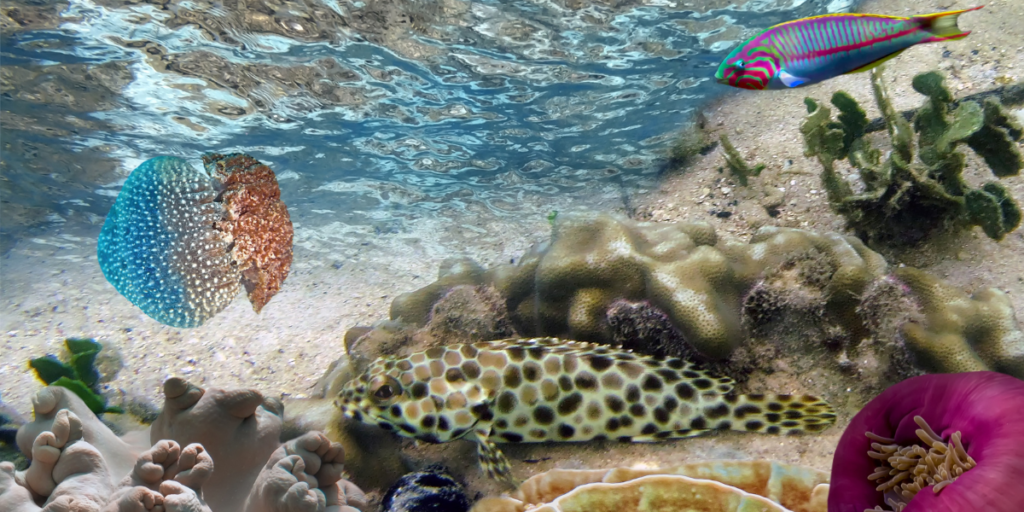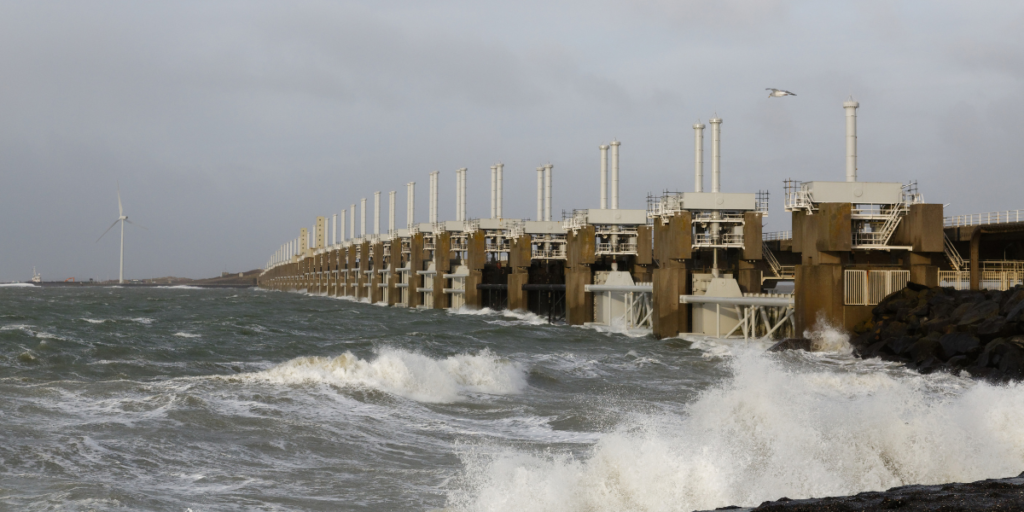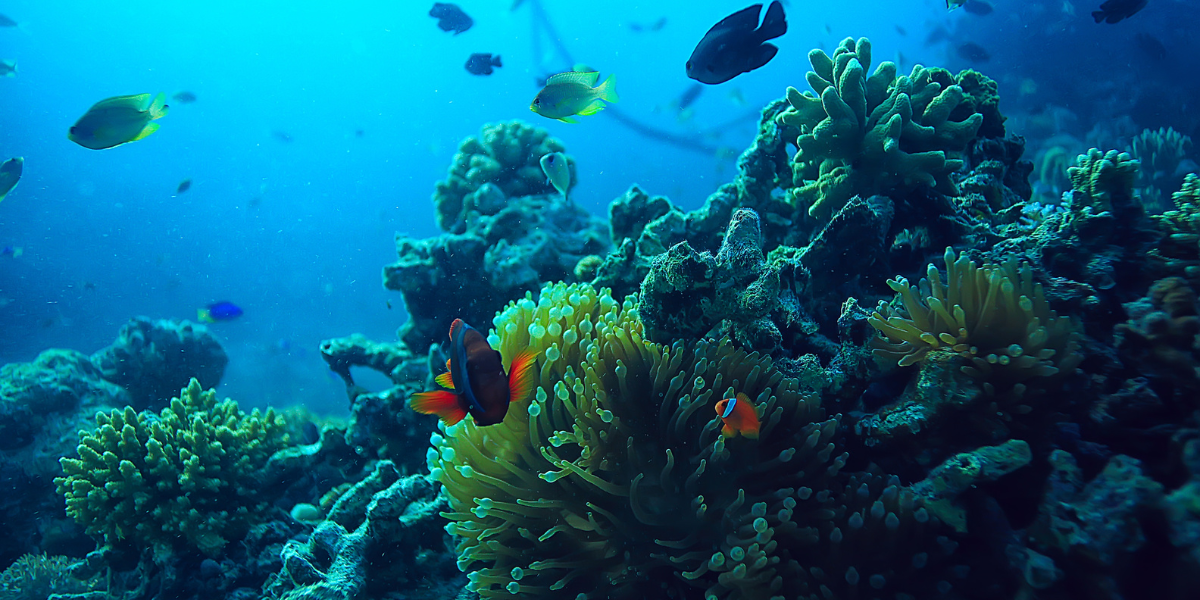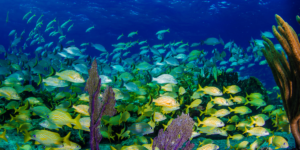You may not realize the tremendous impact that marine ecosystems have on our environment. They are a crucial part of regulating the Earth’s climate, producing oxygen, providing habitats for marine life, and protecting coastal communities from natural disasters like storms and tsunamis. Marine ecosystems also play an essential role in conservation efforts to protect our planet’s delicate balance.
When you think about the ocean, you probably picture vast expanses of water that stretch as far as the eye can see. However, beneath the waves lies an entire world teeming with life and activity. From microscopic plankton to majestic whales and everything in between, marine ecosystems are home to a diverse array of species that work together to keep our planet healthy and thriving.
In this article, we will explore how these ecosystems help us in ways you may not have considered before. So buckle up and get ready to dive into the fascinating world of marine ecology!
Key Takeaways
- Marine ecosystems regulate the Earth’s climate by absorbing and storing carbon dioxide, which helps mitigate human impact on the environment.
- Marine environments produce oxygen, which is essential for the survival of all living creatures, and marine biodiversity is essential for sustaining life on earth.
- Human activities such as overfishing, pollution, and climate change threaten marine biodiversity, which in turn affects the overall health of the ecosystem and the services it provides.
- Conservation efforts, such as Marine Protected Areas, are crucial in ensuring that the oceans remain healthy and thriving for generations to come, benefiting both the environment and human communities.
Regulating Climate
Did you know that marine ecosystems play a critical role in regulating our climate by absorbing and storing carbon dioxide? This process is called carbon sequestration, and it helps to mitigate the impact of human activities on the environment.
The ocean absorbs approximately 30% of the carbon dioxide released into the atmosphere, which helps to reduce its concentration in the air. Without this natural ‘sink,’ global warming would be much more severe.
However, increased levels of carbon dioxide in the ocean can lead to a phenomenon called ocean acidification. As CO2 dissolves in seawater, it creates an acidic environment that can harm marine life such as shellfish and coral reefs.
Therefore, it is essential to maintain a healthy balance between carbon sequestration and ocean acidification. By protecting marine ecosystems and reducing our greenhouse gas emissions, we can ensure a stable climate for future generations.
Oxygen Production
By producing oxygen, marine environments are essential for the survival of all living creatures. Phytoplankton, a type of microscopic algae found in oceans, produces about 50% of the oxygen we breathe. As they photosynthesize, these tiny organisms release oxygen into the water column which is then transported to the atmosphere through gas exchange at the ocean’s surface.
Additionally, marine plants such as seagrasses and kelp forests also contribute to oxygen production. The benefits of oxygen production in marine ecosystems extend far beyond just humans’ need for air to breathe. The supply of dissolved oxygen in seawater supports fish and other aquatic life, allowing them to thrive and maintain healthy populations.
However, climate change is affecting this crucial process by causing ocean temperatures to rise and altering ocean currents, which can limit nutrients necessary for phytoplankton growth. These changes could potentially decrease oxygen levels in oceans and have significant impacts on marine ecosystems worldwide.

Providing Habitats for Marine Life
When it comes to marine ecosystems, the biodiversity they provide is crucial. The diversity of species found in these ecosystems is not only fascinating, but also necessary for the health of our planet.
In addition, marine ecosystems play a major role in supporting fisheries and providing habitats for a wide range of marine life.
Biodiversity in Marine Ecosystems
As you explore the depths of the ocean, you’ll discover that marine ecosystems are home to a vast array of species, each playing a crucial role in maintaining biodiversity and keeping our planet healthy.
Marine biodiversity is essential for sustaining life on earth as it provides us with food, oxygen, and other resources that we need to survive. However, this biodiversity is under threat due to human activities such as overfishing, pollution, and climate change.
The importance of marine biodiversity for tourism cannot be overstated. Many tourists flock to coastal destinations across the globe every year to enjoy recreational activities such as swimming, snorkeling, diving, and fishing. These activities rely heavily on healthy marine ecosystems which provide stunning underwater landscapes teeming with life.
Without these ecosystems in place, many tourist destinations would lose their appeal leading to significant economic loss for coastal communities around the world. Therefore, it’s critical that we take measures to protect our oceans and preserve their rich diversity of species so that future generations can continue to enjoy them.
Importance for Fisheries
Protecting marine biodiversity is crucial for sustaining fisheries and ensuring that future generations have access to this important source of food. Fisheries management plays a significant role in maintaining the balance between fishing activities and the health of marine ecosystems.
Sustainable practices such as monitoring fish populations, implementing quotas, and reducing bycatch are essential for preserving the long-term viability of commercial fishing. Fisheries management involves making informed decisions about how much fish can be harvested without negatively impacting the overall health of the ecosystem.
This requires regular monitoring and assessment of fish populations to ensure they remain at sustainable levels. Quotas are put in place to limit catch amounts, while measures like reducing bycatch help prevent unintentional harm to non-target species. By adopting these sustainable practices, we can protect marine biodiversity while still meeting our needs for seafood now and in the future.
Protecting Coastal Communities
When it comes to protecting coastal communities, there are two key points you need to consider: storm surge protection and prevention of erosion.
Storm surges can cause devastating damage to homes, businesses, and infrastructure along the coast. Coastal erosion is also a serious issue that can lead to loss of property and even endanger lives.
By implementing strategic measures like sea walls, vegetation management, and beach nourishment projects, we can mitigate these risks and keep our coastal communities safe.

Storm Surge Protection
Who needs sturdy levees or seawalls when you have the natural storm surge protection of healthy marine ecosystems? Coastal engineering has long relied on these man-made structures to protect coastal communities from the devastating effects of storms, but more and more experts are recognizing the value of preserving and restoring wetlands, reefs, mangroves, and other marine habitats as a means of providing even better protection.
Studies have shown that intact ecosystems can reduce wave energy by up to 97%, while degraded ones may only provide minimal protection. In addition to buffering against waves and storm surges, healthy marine ecosystems also absorb excess water in times of heavy rainfall, reducing flooding in downstream areas.
By investing in wetland restoration and other ecosystem-based approaches to storm surge protection, we can not only save lives and property during extreme weather events but also help mitigate climate change by sequestering carbon in coastal soils.
Prevention of Erosion
You can enhance the resilience of your coastal property by implementing erosion prevention measures that integrate natural features and man-made structures. Coastal stabilization is crucial in preventing shoreline erosion, which can have severe consequences on both marine ecosystems and human infrastructure.
Natural features such as sand dunes, wetlands, and mangroves act as buffers against storm surges and wave action, effectively protecting shorelines from damage. Man-made structures like seawalls, breakwaters, and revetments also play a vital role in preventing erosion. These structures are designed to absorb the energy of waves before they reach the shore, reducing their impact on coastlines.
Additionally, sediment retention systems like beach nourishment help replenish eroded beaches with fresh sand, further reinforcing coastal stabilization efforts. By implementing these measures together with careful planning and management practices, we can protect our coasts from erosion while preserving valuable marine ecosystems for generations to come.
Conservation Efforts
Conservation efforts can’t be ignored if we want to preserve the beauty and diversity of marine ecosystems. Sustainable practices are crucial in ensuring that the oceans remain healthy and thriving for generations to come.
One way this is being achieved is through the establishment of Marine Protected Areas (MPAs). These areas are designated regions where fishing, drilling, and other harmful activities are restricted or completely prohibited.
MPAs not only provide a safe haven for marine life but also help regulate fisheries outside their boundaries by maintaining healthy populations within them. Studies have shown that MPAs increase fish biomass, enhance biodiversity, improve habitat quality, and even reduce the impacts of climate change on marine ecosystems.
Through these efforts, scientists and conservationists hope to create sustainable solutions that balance human needs with environmental protection, ultimately preserving the wonders of our oceans.
Frequently Asked Questions
How do marine ecosystems impact global food security?
Sustainable fishing and aquaculture development can increase global food security by providing a reliable source of protein. However, overfishing and mismanagement of marine ecosystems can have negative impacts on food availability and the environment.
What are the economic benefits of conserving marine ecosystems?
You may wonder why conserving marine ecosystems is important, but sustainable fishing and the “blue economy”rely on healthy oceans. The economic benefits of conservation outweigh the costs, with potential gains of $1.5 trillion annually.
Can marine ecosystems help in the fight against ocean acidification?
Marine ecosystems have the potential to mitigate the effects of ocean acidification. Coral resilience can be enhanced by reducing local stressors and protecting healthy coral populations, which can help maintain a balanced ecosystem and reduce carbon emissions.
How do marine ecosystems support recreational activities such as fishing and tourism?
Hey, you! Did you know that marine ecosystems provide sustainable fishing opportunities and ecotourism activities? These activities not only benefit the economy but also promote conservation efforts to protect our oceans’ health.
What are the potential consequences of losing marine biodiversity?
Losing marine biodiversity can result in ecological imbalance, leading to a decline in ecosystem services such as carbon sequestration and nutrient cycling. Species at risk of extinction include sea turtles, sharks, and corals, with potential cascading effects on fisheries and tourism industries.



